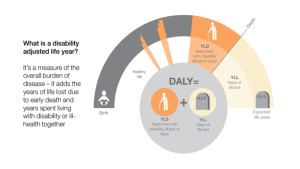The World Health Organisation (WHO) and the International Labour Organization (ILO) have released a report detailing the impact of occupational risk factors on human health as part of their 2030 Sustainable Development Goals (SDGs).
The report aims to promote health and wellbeing in the workplace. It provides a basis for identifying, prioritising, planning, costing, implementing, evaluating effective policies and actions to prevent the work-related burden of disease and injury across many sectors.
Not least of all, the report reveals the remarkable rise in musculoskeletal disorders (MSDs) in the workplace. Keep reading as we discuss the findings, and what businesses can do to reduce the impact of MSDs in their workplace.
Musculoskeletal disorders on the rise
Occupational exposure to ergonomic factors is an established risk factor for back and neck pain (Musculoskeletal Disorders (MSDs)), with back pain being among the main reasons for sickness absence and disability pension, globally, resulting in a productivity loss of €8928 per patient in a 12-month period (reference group €3499).
More shockingly, the WHO/ILO report revealed that between 2000 and 2016, there has been a 20.1% increase of reported MSDs.
This equates to 12.27 million DALYs – or Disability-adjusted life years.
One DALY represents the loss of equivalent of one year of full health.
With the impact of MSDs on workers’ quality of life and productivity, this rise poses a significant risk to businesses who will need to take action to ensure their workers are adequately informed and supported.
What are Musculoskeletal Disorders?
The Musculoskeletal system is made up of bones, cartilage, ligaments, tendons, and connective tissue, providing the framework for the muscles and other soft tissues. It supports your body’s weight, maintains posture and is involved in movement.
MSDs are disorders that affect the human body, causing issues such as back or neck pain and carpal tunnel syndrome.
What causes musculoskeletal disorders in workers?
Workers in all sectors are affected by ergonomic factors. Back and neck pain occurs through occupational exposure including prolonged sitting and manual handling of loads.
Neck pain in particular is associated with teleworking and prolonged sitting time at improvised home office workstations.
How to reduce the likelihood of staff developing MSDs in the workplace
DSE risk assessments highlight the areas that carry the risk of developing MSDs and putting in control measures to reduce the likelihood. For example, studies have shown that chair intervention, that is when you have the appropriate chair for you and the working you are doing, reduces MSD symptoms among workers who are required to sit for long periods of time.
- Encourage employees to move regularly
Physiological studies have shown the best thing that you can do if your job involves you sitting for prolonged periods of time, is to move.
- Provide adequate DSE training
DSE training shows employees the best workstation setup to reduce MSDs, whether they are working in an office or at home.
- Encourage employees to be mindful of prolonged screen use
As well as advising on the importance of taking breaks, business leaders can make staff aware of the correct place for their keyboard and mouse and the 20:20:20 rule (every 20 minutes, look away at something at 20 foot, for 20 seconds) to avoid eye strain.
Maintain a happy, healthy workforce
Ergonomic risk assessments and training are an excellent way to reduce the health loss to these ergonomic attributable factors.
Healthy Working is our award winning DSE management program for office, home and hybrid workers. It’s the software of choice for 2000 organisations and 3 million people across the across the world.
Healthy Working provides DSE risks assessment and training tailored for an employee’s workstation, which will help you to quickly identify any risks to ensure your people stay safe and healthy.
Download our brochure or arrange a free trial.



